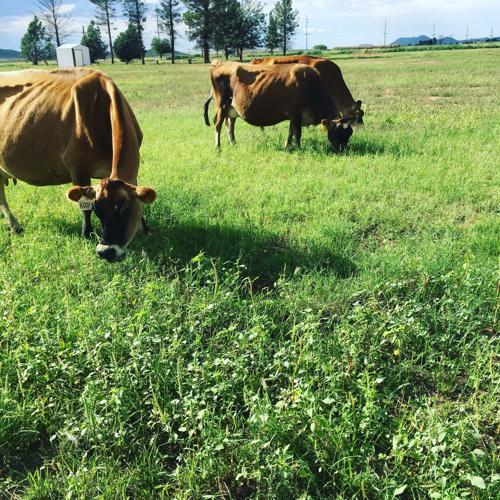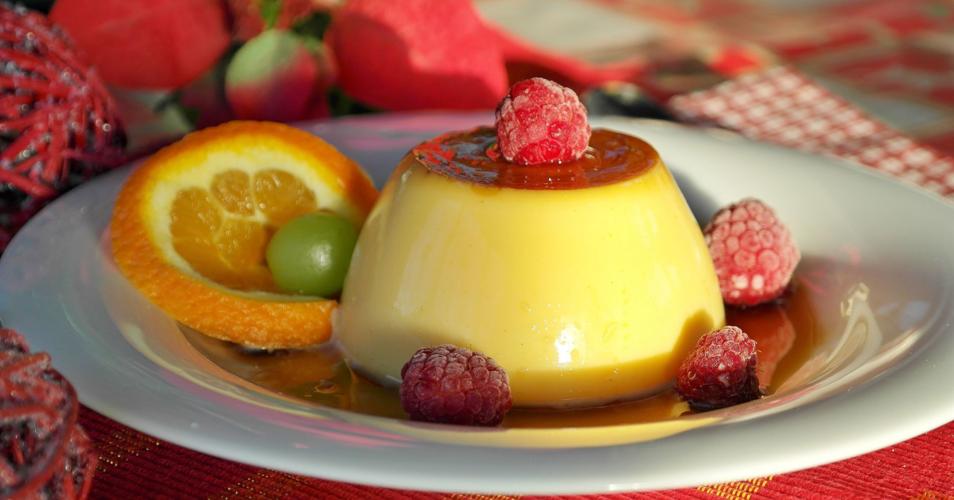Jared Strite’s voice is gentle and filled with kindness as he talks about his herd of 35 Jersey dairy cows. It’s clear that he’s fond of the Jersey breed, and he’s happy to tell you why.
“The Jersey is bred to produce high butterfat and more solids than any other breed,” he says. “The solids and the butterfat contribute good flavor, and they’re also important to cheesemakers, butter makers and cream makers.”
Strite and his wife, Joyce, operate Golden Rule Dairy in Elfrida in Cochise County. The dairy takes its name from the name of the road where the Strites last lived before moving to their current property. But it’s also a scriptural reference, Strite says. “I try to provide food for others the way I want it for myself, and I want the very best.”
The couple, both Arizona transplants from Pennsylvania, once kept Holsteins, the big, black-and-white cows most people think of when they think of a dairy cow. The Holstein gives a huge volume of milk, Strite says, but its milk averages only 3ƒ% butterfat. Because dairies are paid a premium price for milk with higher protein and higher butterfat, even then he was thinking of switching his herd’s breed.
“At one time, I almost sold all the Holsteins. The Jersey gives milk that’s at least 4% and sometimes higher,” he says.
So when the couple moved to Arizona, they settled on Jerseys. And the breed perfectly fits the Striteses’ idea of how milk should be produced.
“They’re a lot more docile than my Holstein herd was,” he says. “My herd is healthy and relaxed and feeling good. They’re very efficient on pasture, rather than on grain rations, to boost their production.”
And, he says, because the breed is smaller a cow might weigh 700 to 800 pounds rather than the Holstein’s 1,200 to 1,300 pounds and “they don’t eat as much.”
The Striteses say their milk comes from cows that are grass-fed and given non-GMO barley, lightly fermented to improve its nutrition. “But the fact is, they don’t really want much of the grain,” he says. “They get everything they need from the pasture.”
The Arizona Department of Agriculture has certified Golden Rule as a licensed Grade A raw milk dairy, which means it meets the strictest sanitary, milk storage and herd-health qualifications.
Golden Rule’s milk “goes straight from the cow into the bottle,” Strite says. It is neither pasteurized nor homogenized; left to stand, the cream will rise to the top of the milk. Though some experts are wary of raw milk, Strite is confident that his herd’s milk is a high-quality product.
For one thing, he takes cleanliness seriously.
“At any USDA Grade A dairy, they can have up to 10 parts per million of coliform bacteria,” he says. “I like mine at zero. That takes extreme cleanliness to do that, starting with how the cow is fed, carefully washing the udder of the cow and including the milking pipeline, the bottling machine and the bottles.”
You’ll find Golden Rule Dairy milk at about $6 a half-gallon at farmers markets, including the Saturday Heirloom Oro Valley Farmers Market and the Sunday Heirloom Farmers Market at Rillito Park. The milk is also available at Time Market, 444 E. University Blvd.; Aqua Vita, 2801 N. Country Club Road; the Food Conspiracy Co-op, 412 N. Fourth Avenue; the Tucson CSA, 300 E. University Blvd., No. 146; and at Rocking K Ranch Market, 12660 E. Old Spanish Trail.
To celebrate such superb milk, I treated myself to a little flan this week. A few raspberries capped off the treat. Here’s the recipe:
Flan
Makes 6 servings
Flan is a dramatic dessert that needs a little bit of special handling. It’s nothing difficult, but follow these steps carefully to get a terrific result. Straining the custard mixture means it’s perfectly smooth, and baking in a water bath provides gentle heat so the flan doesn’t overcook.
Ingredients
1 3/4 cups heavy cream
1 cup whole milk
Pinch of salt
1 teaspoon vanilla extract
1 cup sugar
1/3 cup water
3 large eggs
7 large yolks
7 tablespoons sugar
Preparation
Position rack in center of the oven and preheat to 350 degrees. Combine cream, milk, salt and vanilla extract in a large glass measuring cup. Set six »-cup ramekins into a 13x9x2-inch baking pan.
Combine 1 cup sugar and 3/4 cup water in a heavy medium saucepan. Stir over low heat until sugar dissolves. Increase heat to high and cook without stirring until syrup turns deep amber, brushing down sides of pan with wet pastry brush and swirling pan occasionally, about 10 minutes. Quickly pour caramel into the ramekins. Using oven mitts, immediately tilt each ramekin to coat the sides.
Whisk eggs, egg yolks and sugar in a medium bowl just until blended. Gradually and gently whisk egg mixture into cream mixture without creating lots of foam. Pour custard through small sieve into prepared ramekins, dividing evenly (mixture will fill ramekins). Place the baking dish with the ramekins into the oven and pour enough hot water into the baking dish to come about halfway up the sides of the ramekins.
Bake until centers of flans are gently set, about 40 minutes. Transfer flans to rack and cool. Chill until cold, about 2 hours. Cover and chill overnight. (Can be made 2 days ahead.)
To serve, run a small sharp knife around flan to loosen. Turn over onto plate. Shake gently to release flan. Carefully lift off ramekin, allowing caramel syrup to run over flan. Repeat with remaining flans and serve.
Next week: David Perreira of Yellow Brick Coffee explains why single-origin coffees can be a revelation to a coffee connoisseur.





